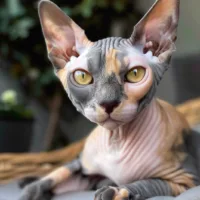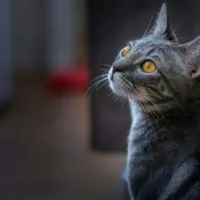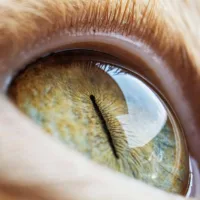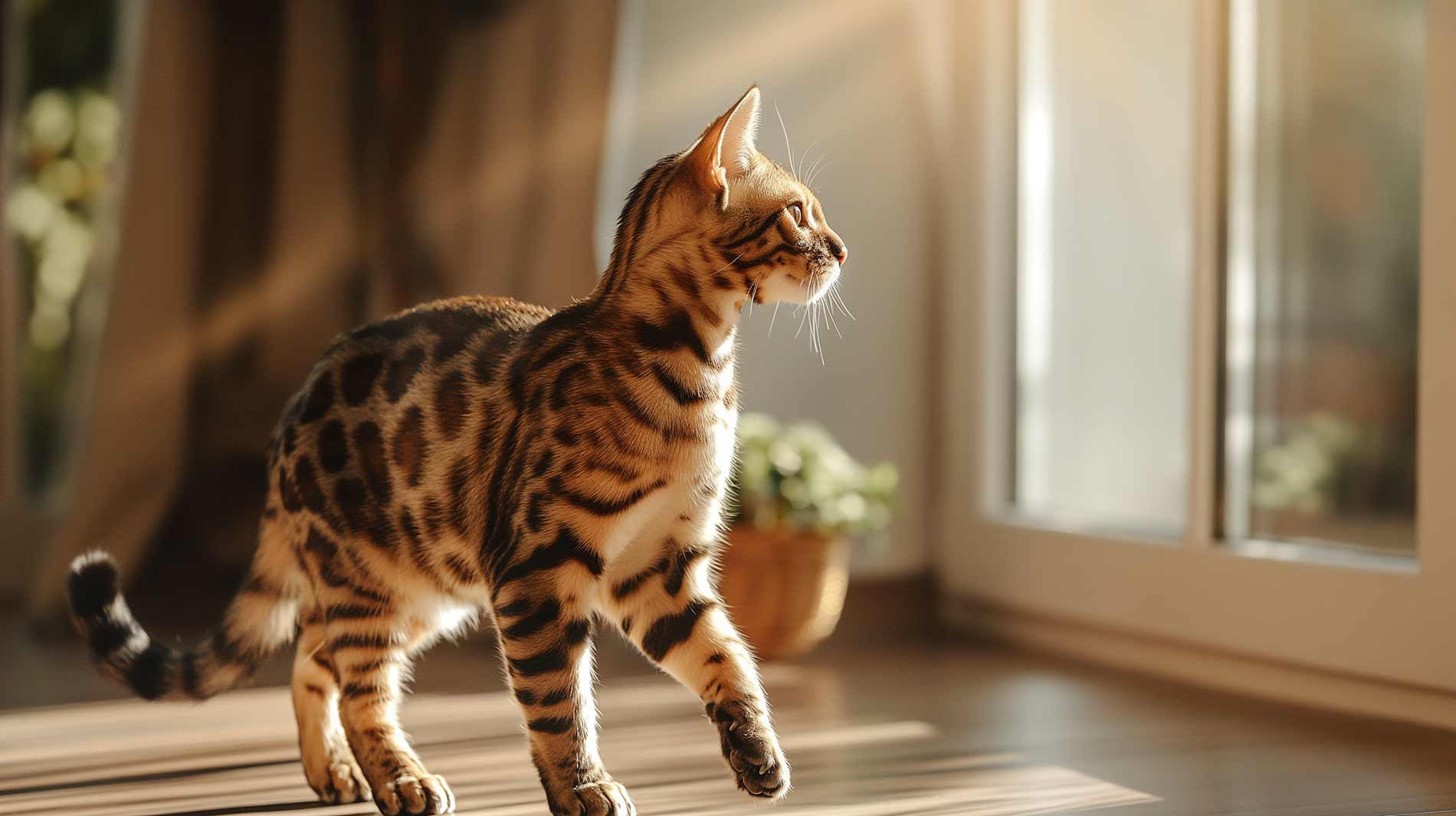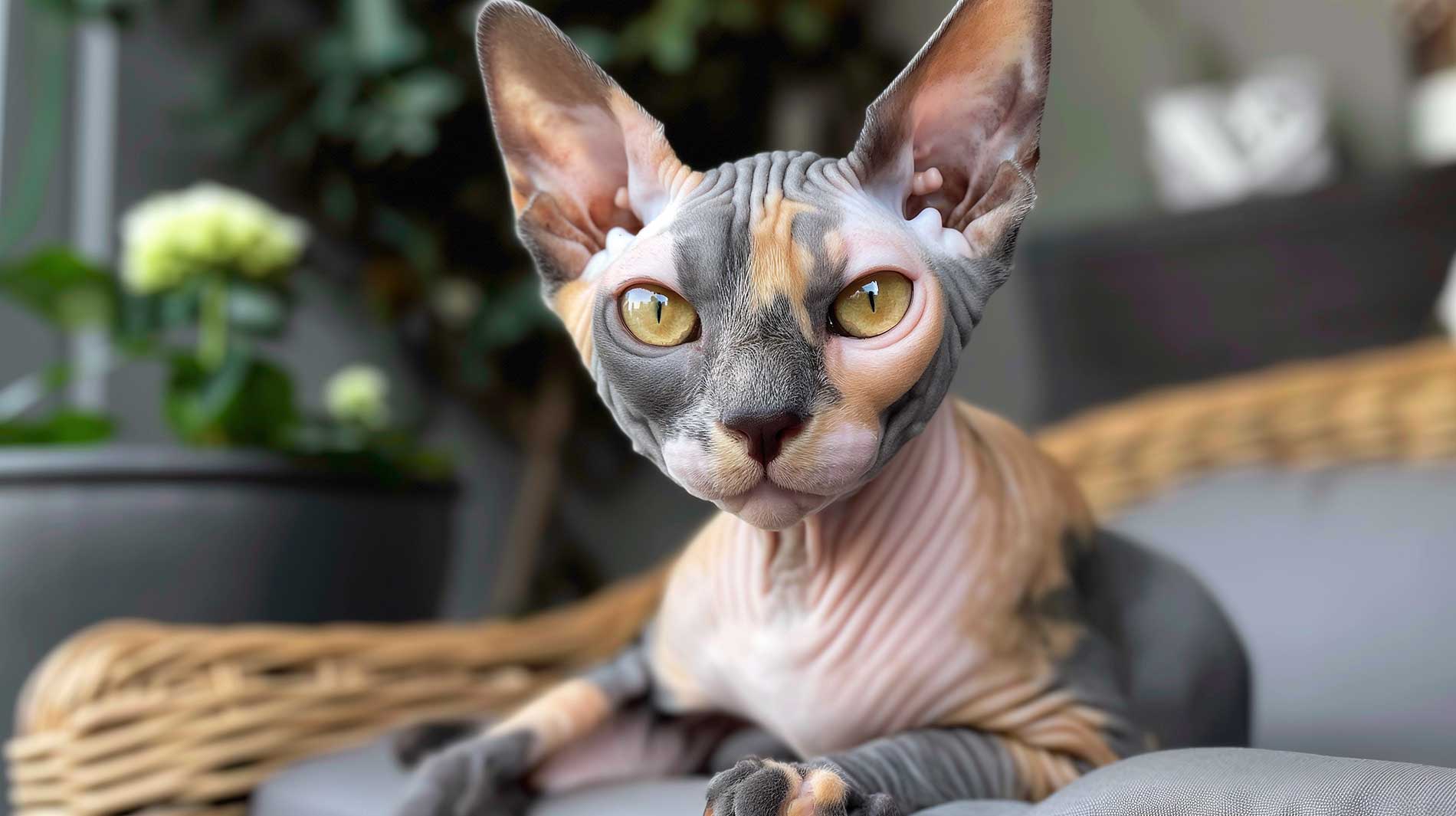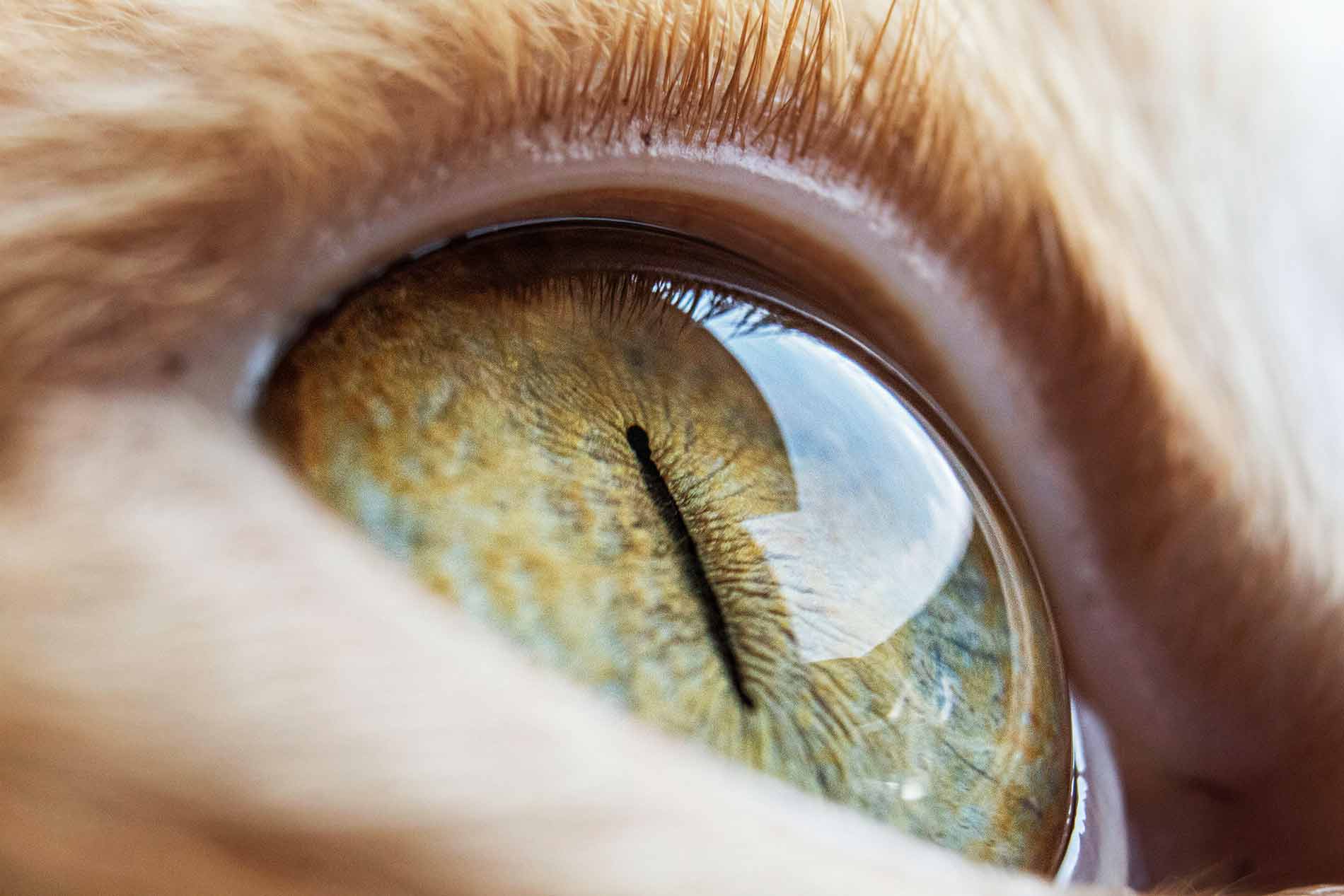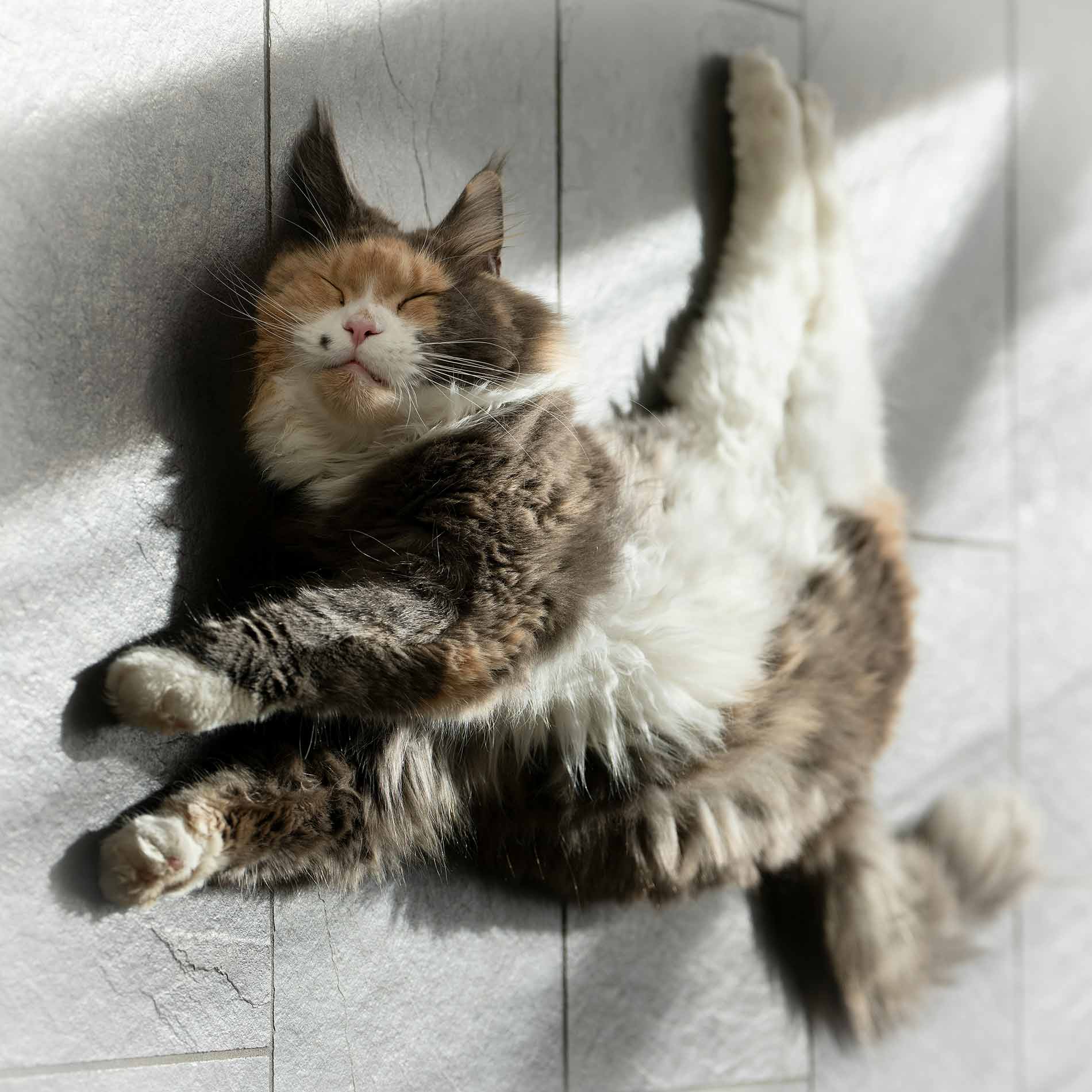Understanding cat fur
Cats’ coats are more than just pretty decorations – they serve important functions and are made up of different types of hair, each with its own role to play. Hair is produced in hair follicles at regular intervals. Cat fur has an outer top coat for protection and an undercoat for insulation. Shedding varies based on factors like age, breed, housing conditions, and season.
Types of hair in cat coats
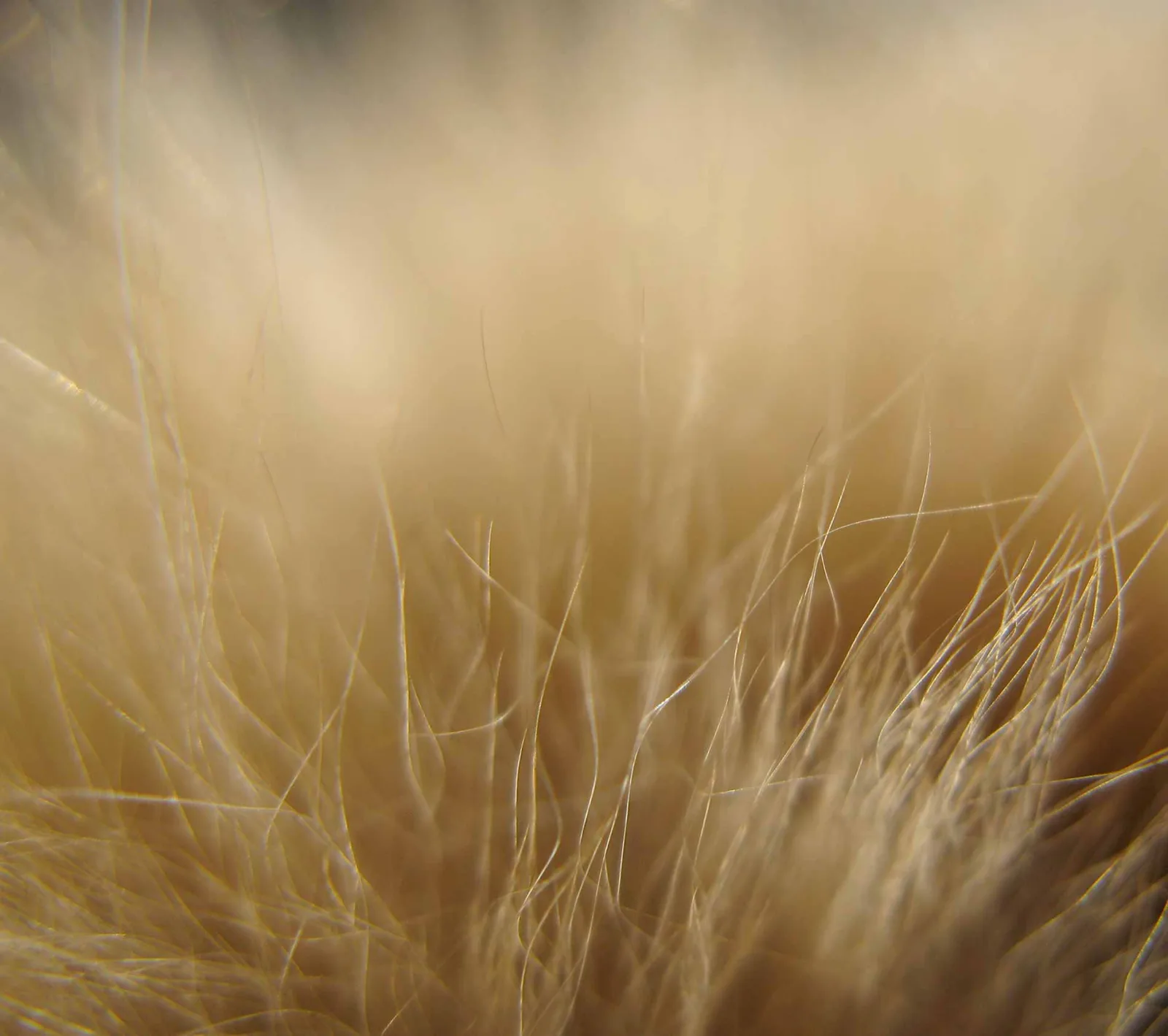
- Guard hairs: These are the longest and thickest hairs in your cat’s coat, serving as the first line of defense against the elements.
- Awn hairs: These hairs are shorter and stiffer than guard hairs, providing additional protection and insulation.
- Down hairs: The softest and shortest hairs in the coat, down hairs act as a cozy insulating layer, trapping heat close to the body.
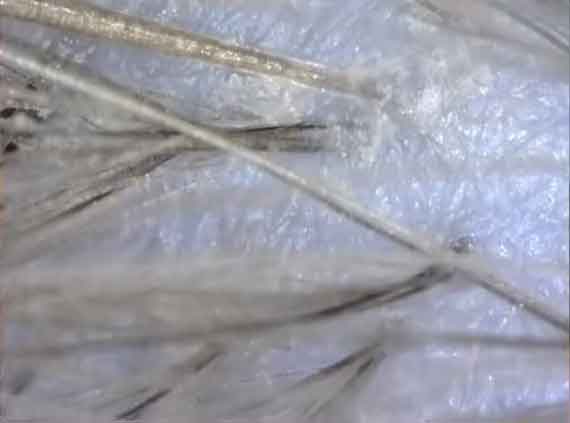
Coat types – single, double, or triple coat?
Cats exhibit remarkable diversity in their coat types, influenced by a complex interplay of genetics. One notable distinction lies in the presence of single, double, or even triple coats among different breeds. Breeds with double coats, such as the Maine Coon or Norwegian Forest cat, possess an undercoat of dense, insulating fur beneath a longer outer layer of guard hairs. This double-layered structure provides enhanced protection against cold weather and moisture, making these breeds well-suited to harsh climates.
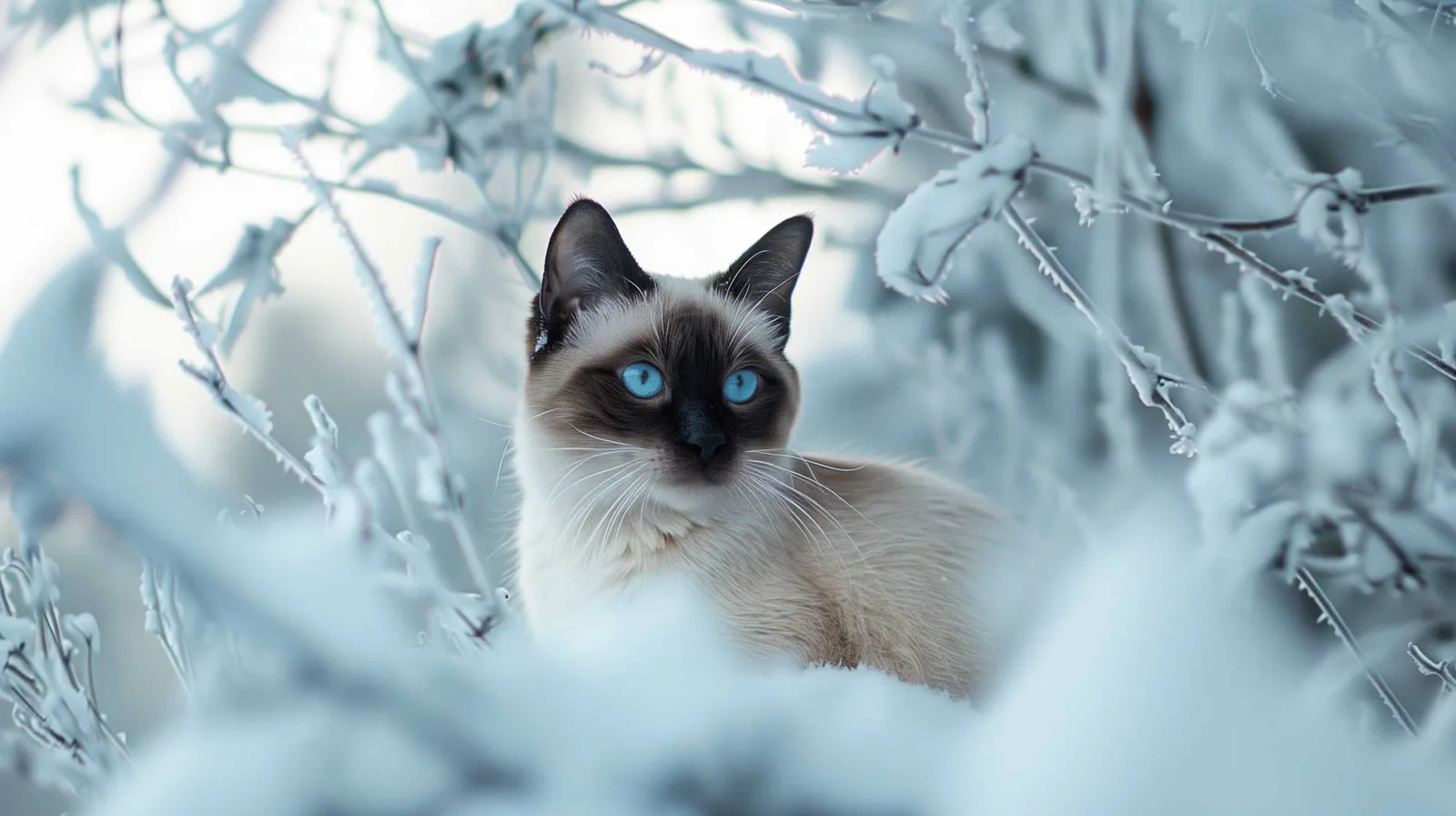
In contrast, cat breeds with single coats, like the Siamese or Abyssinian, lack the undercoat and typically have shorter, sleeker fur. Their single-layered coats require less grooming and may offer better heat dissipation, making them ideal for warmer environments. Triple-coated breeds, such as the Siberian, feature an additional layer of awn hairs between the guard and undercoat, further enhancing insulation and protection.
Growth cycle and shedding
Hair growth is commonly influenced by nutrition, hormones, and seasonal changes. Cats tend to shed most noticeably during the spring and fall, and shedding can also be triggered by shifts in temperature or sunlight. Genetics largely determine hair traits, while hormones are a key factor in promoting healthy hair growth. Just like human hair, cat fur goes through phases of growth, rest, and shedding.
- Anagen phase: This is the active growth phase, where new hair follicles form and hair grows steadily. Your cat’s coat looks lush and full during this phase.
- Catagen phase: In this transitional phase, hair growth slows down and the hair follicle shrinks.
- Telogen phase: Also known as the resting phase, no new hair growth occurs during this time. Instead, old hairs are shed to make way for new ones.
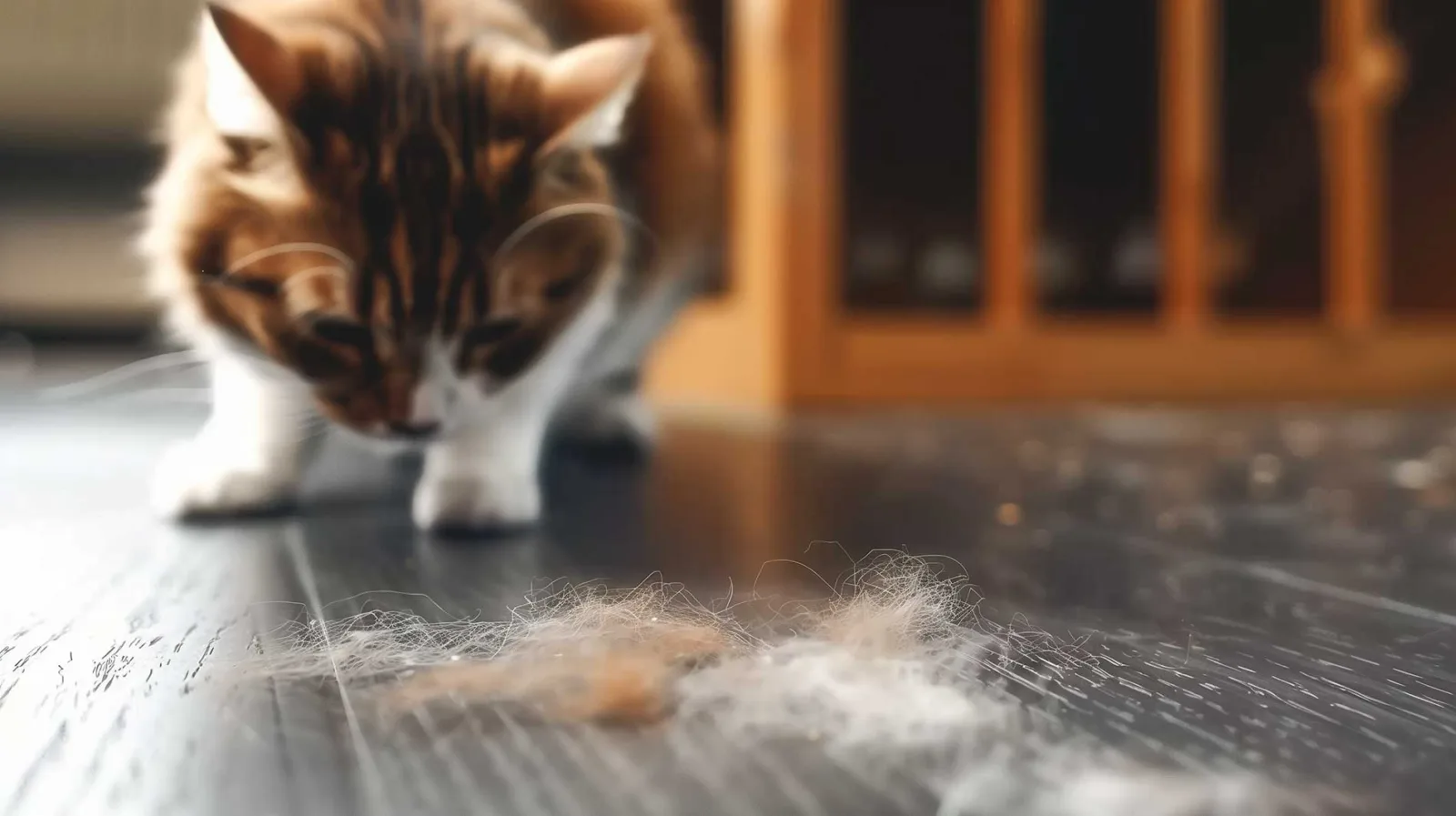
During the colder months, your cat’s coat naturally thickens to provide her with protection and warmth. If the undercoat is not regularly groomed and removed during the spring and summer months, along with proper cleaning and room for new hair growth, it can result in matting. Additionally, the majority of the hairs go into a resting phase during winter, causing excessive shedding. Cold and damp air can further contribute to matting, which is why you should carefully dry and separate the coat to prevent knots and bacterial infections.
Coat colors and patterns in your cat’s fur
Ever wondered why some cats sport stripes while others are solid? It’s all written in their genetic code.
Melanin production
At the heart of coat coloration lies melanin, the pigment responsible for hues ranging from black to orange. Melanin comes in two forms: eumelanin, responsible for black and brown colors, and pheomelanin, responsible for red and yellow colors.
Genetic determination
The genes responsible for melanin production dictate whether a cat’s coat will be predominantly black, brown, red, or somewhere in between. Eumelanin, the black-brown pigment, creates the darker hues seen in cats with black, brown, or gray coats. On the other hand, pheomelanin, the red pigment, is responsible for lighter shades such as orange, cream, and ginger. The combination of these pigments, along with other genetic factors, results in the wide array of coat colors and patterns observed in different cat breeds. White hair is usually simply hair with little to no melanin inside.
Pattern-modifier genes
In addition to genes responsible for melanin production, there are several other genes that play crucial roles in determining a cat’s coat color and pattern through breeding. One such gene is the dilution gene, which, when present in its diluted form, can lighten the intensity of both eumelanin and pheomelanin, resulting in lighter coat colors. This gene is responsible for the dilution of black to blue (gray) and red to cream in cats.
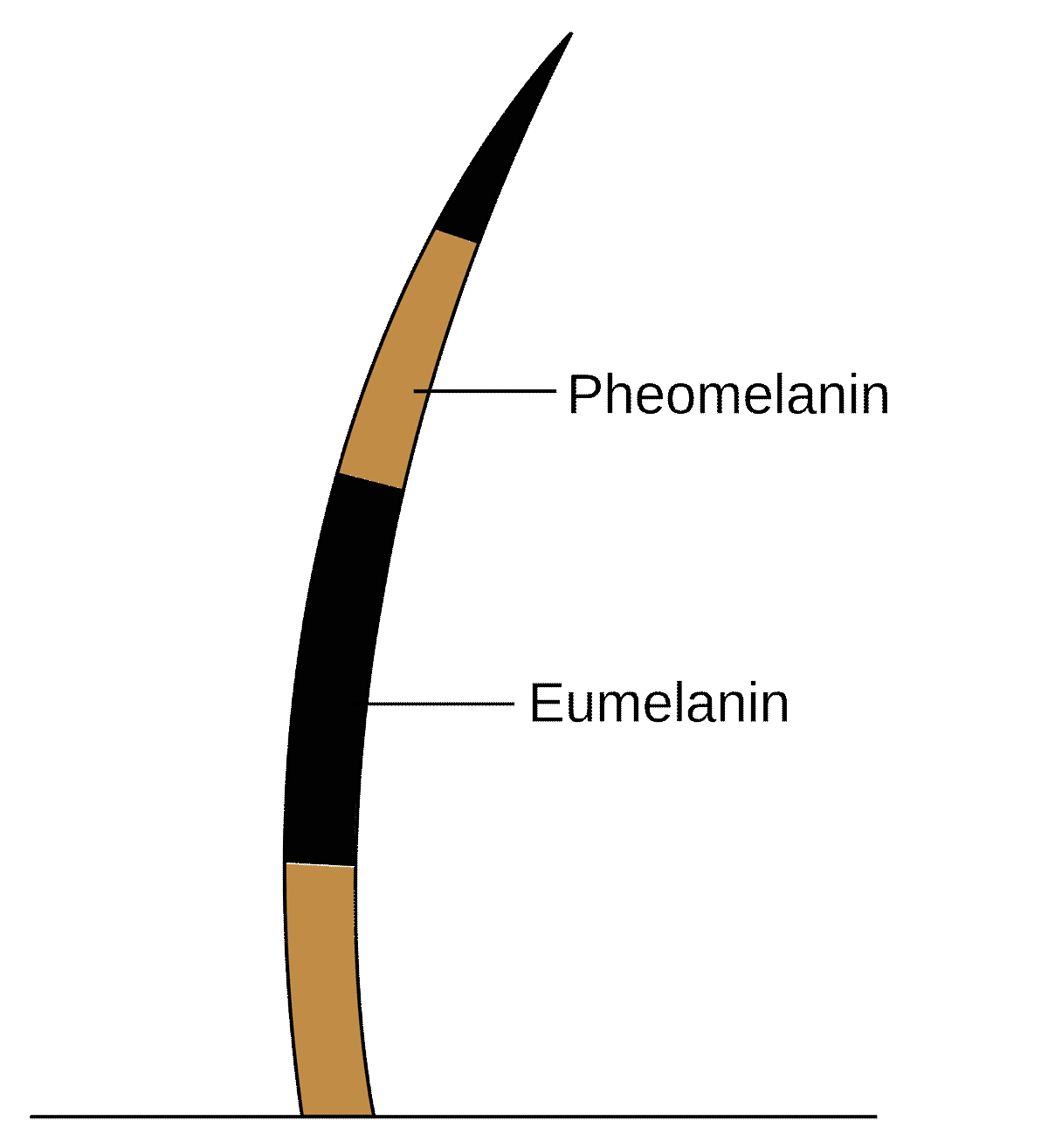
Additionally, there are genes that influence the distribution and pattern of pigmentation, such as the agouti gene, which determines whether a cat’s coat will display banded hairs (agouti) or solid coloration. Another important gene is the white spotting gene, which controls the presence and extent of white markings on a cat’s coat. This gene can lead to varying degrees of white patches, from just a few spots to large areas of white, depending on the cat’s genetic makeup.
Another truly fascinating gene is the one that’s responsible for the colorpoint coat you know from Siamese cats. It is genetically partial albinism, which depends on temperature. Where it’s warmer on the body, the coat becomes brighter! If you are interested in learning more, check out our Siamese cat breed portrait.
DNA plays a crucial role in determining not only a cat’s coat color and pattern but also its texture, length, and overall appearance. Different cat breeds have distinct genetic signatures that result in a wide range of coat variations.
Variations in coat traits
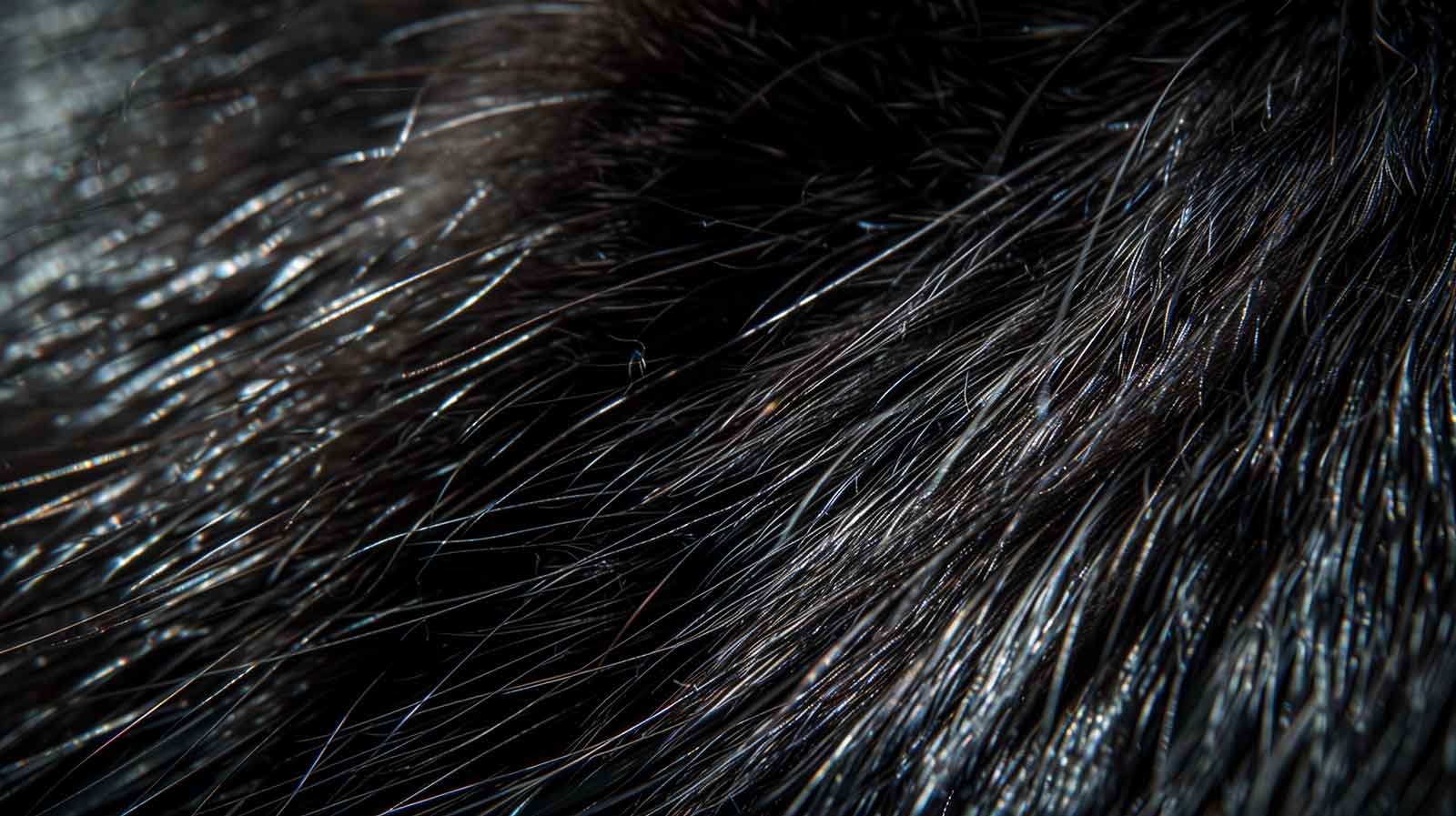
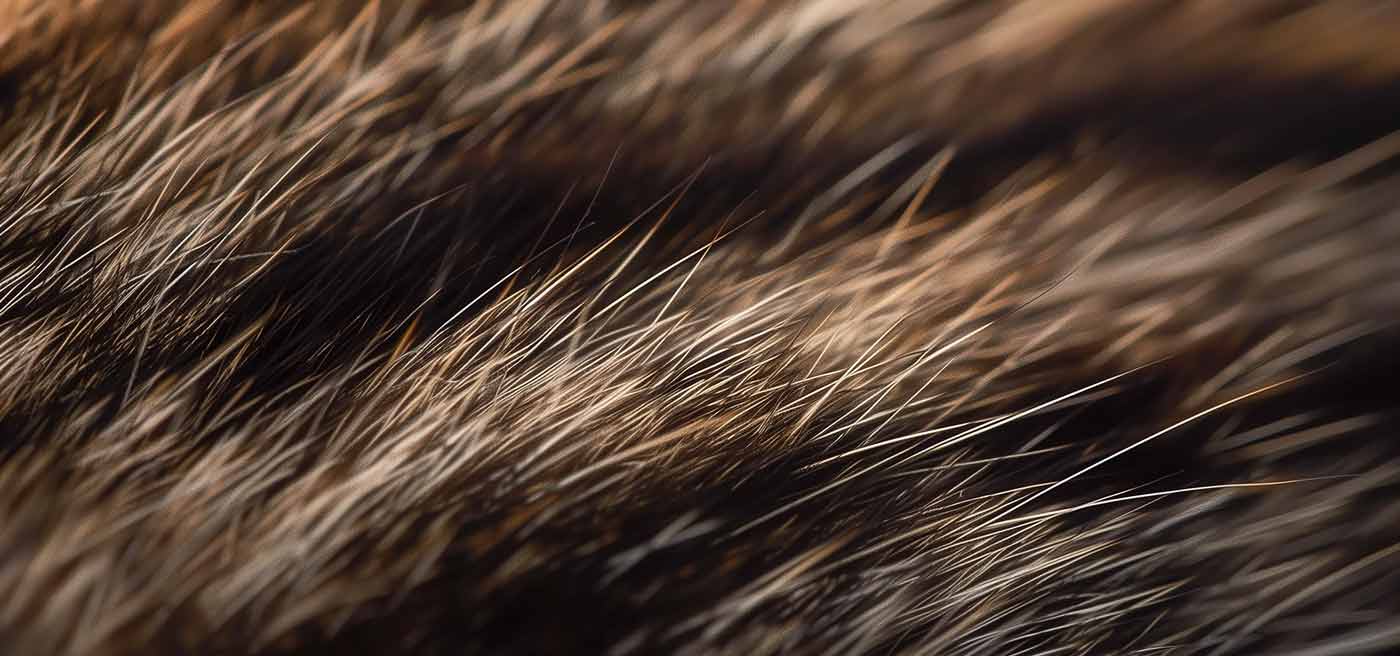
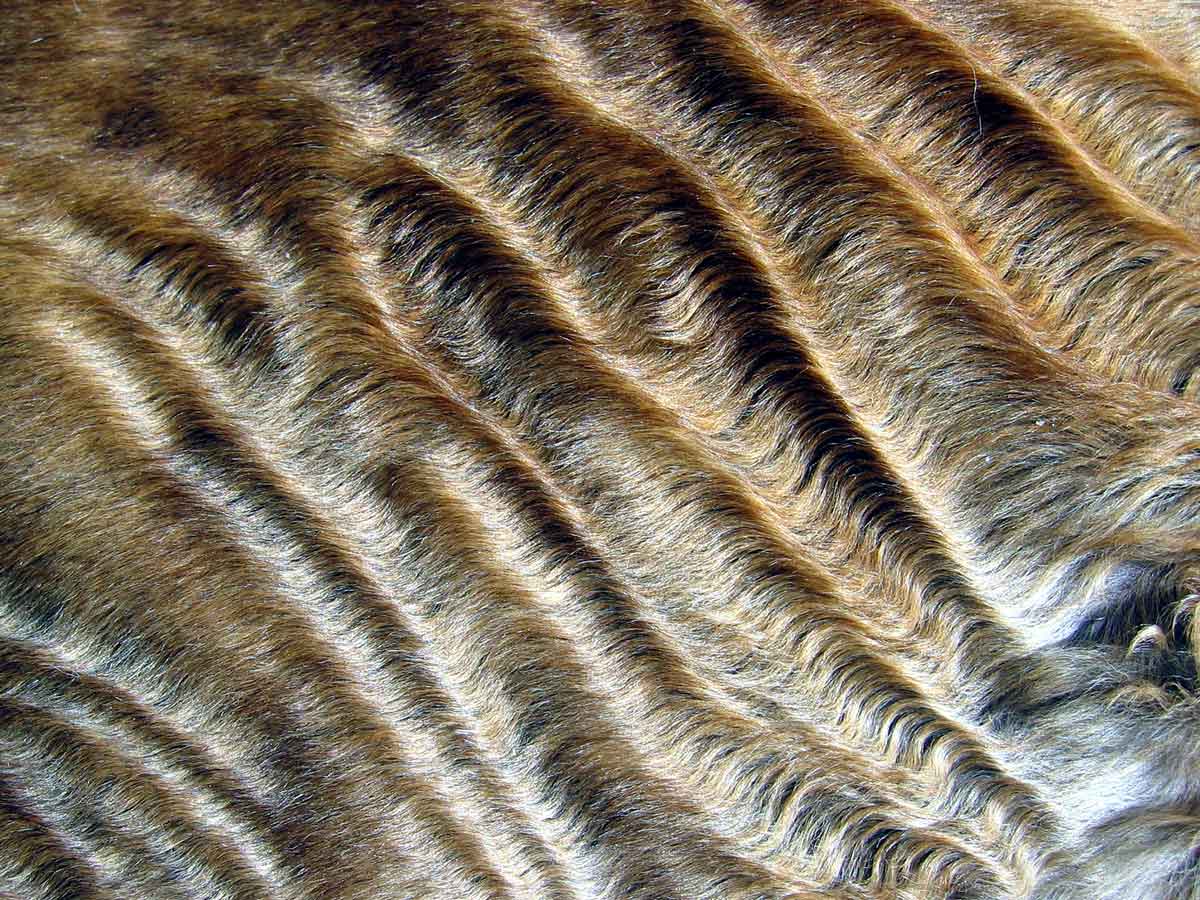
- Texture: Some cats have soft, silky fur, while others boast a dense, plush coat. Genetic variations influence the structure of the hair follicles and the type of hair produced, leading to differences in texture.
- Length: From short-haired breeds like the sleek Siamese cat to long-haired beauties like the majestic Maine Coon, coat length is determined by specific genes that regulate the growth cycle of hair follicles.
- Color and Pattern: We’ve already touched on how genes control melanin production, which in turn determines a cat’s coat color and pattern. But it’s not just about black or orange – there are countless combinations and variations influenced by genetics.
- Structure: In Bengal cats, the hair shaft has a hollow, air-filled core that refracts light, giving the fur a sparking or shimmering effect.
Examples of genetic influences
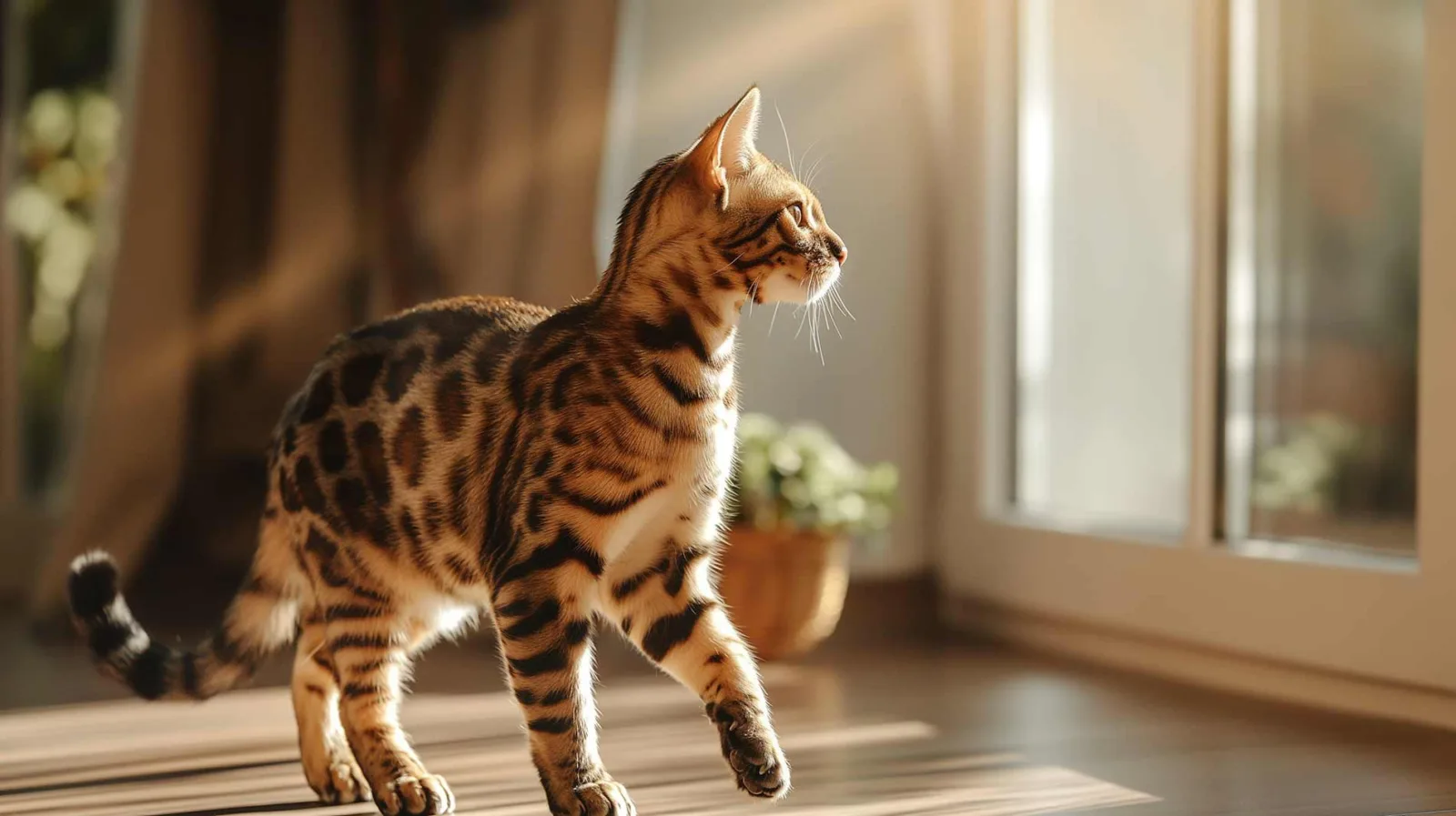
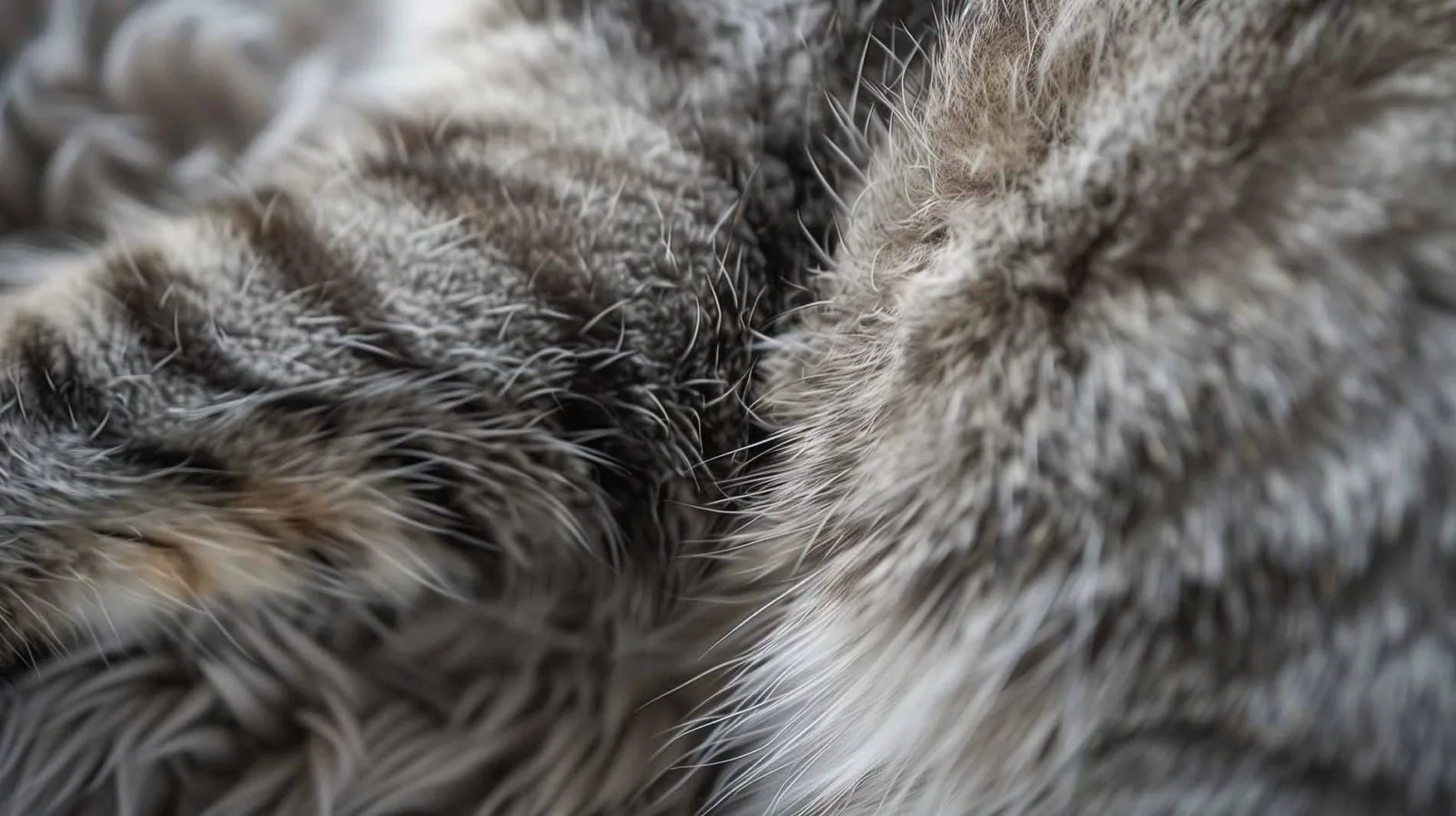
- The Ragdoll cat breed is known for its striking blue eyes and semi-long, plush fur. Specific genes control the expression of coat color and pattern in Ragdolls, resulting in their distinctive appearance.
- The Devon Rex, with its curly coat and oversized ears, carries a genetic mutation that affects hair follicle development, leading to the unique texture of its fur.
- The Bengal cat’s wild appearance is attributed to its coat pattern, which is reminiscent of a leopard’s spots. Genetic factors dictate the distribution and size of these spots, giving Bengals their exotic look.
Common coat patterns and the role chromosomes play
- Tabby: This is perhaps the most common and recognizable coat pattern, featuring distinctive stripes, swirls, or spots. Tabby cats come in various colors, from classic brown tabbies to striking silver tabbies.
- Tortoiseshell: Also known as torties, these cats boast a beautiful blend of black and orange patches, creating a unique mosaic-like pattern. Fun fact: most tortoiseshell cats are female! This is because the genes that determine the black and orange colors, which are variants of the eumelanin and pheomelanin pigments, are located on the X chromosome. Female cats have two X chromosomes, allowing for the expression of both colors, whereas males, having only one X chromosome, typically express only one color.
- Calico: Similar to tortoiseshell cats, calicos sport patches of black, orange, and white fur. The key difference is that calicos have larger patches of white mixed in with their black and orange areas. Like tortoiseshells, calicos are usually female because the coloration depends on the presence of two X chromosomes. Both, Torties and Calicos genetics are referred to as mosaicism.
- Solid colors: Some cats keep it simple with a single, solid coat color. Whether it’s sleek black, snowy white, or vibrant ginger, these cats exude elegance in their simplicity.
If you’re interested in knowing how to brush your cat’s coat properly, you can move on to our article about it next. Let us know in the comments if there’s any coat trait or pattern that you’d like us to explain in more detail!
